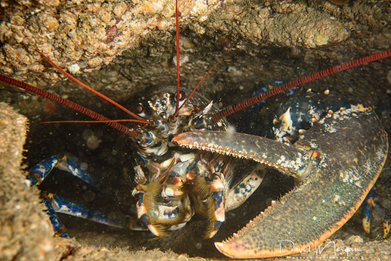Developing genomic tools to support lobster aquaculture
AquaLeap colleagues from Exeter and Cefas report on their European lobster reference genome.
14/1/2022
The AquaLeap consortium project is comprised of five teams, which combine university, government, and industry scientists. Each team pursues objectives related to advancing selective breeding in several UK aquaculture species. Since it began in January of 2019, some exciting progress has been made, and we are happy to provide some further updates.
The following report from AquaLeap team members at the University of Exeter and the Centre for Environment, Fisheries and Aquaculture Science (Cefas) focuses on their research in European lobster and how it can help support the consumption of this highly-valued aquaculture and fisheries species.
Enabling genomic resources for the European lobster
Report by Josephine Paris (University of Exeter), Tom Jenkins (University of Exeter), Ronny van Aerle (Cefas), Jamie Stevens (University of Exeter), and Eduarda Santos (University of Exeter)
As a prized seafood product, the European lobster (Homarus gammarus) is one of the UK’s most valuable export species and its fisheries are of great importance to both local and regional economies. As a result, the species is experiencing increased fishing pressure, and thus attention has turned towards the potential of the species for aquaculture and hatchery releases to reduce fishing pressure on native stocks. Through collaboration between the University of Exeter, the National Lobster Hatchery and Cefas, this project aims to develop genomic resources for the management of European lobster.

Together with other AquaLeap partners, including Xelect Ltd and the Roslin Institute, we have been developing a high-quality reference genome for the species. We previously generated over 9 million long-read sequences and have since generated an additional 4.5 billion short-read sequences. This additional sequence depth allows us to discern genuine low frequency heterozygous regions from potential false variants produced by sequencing errors which are often problematic in long-read technologies (~15%). Using these short reads, we have successfully polished the genome, improving the quality of the assembly, which currently covers 96% of all essential genes. The other advantage of these short-read sequences is that they supply us with a method to estimate the true genome size of the species, allowing us to benchmark the size of the fully assembled sequences (circa 1.8 gigabytes). Ongoing work includes quantifying repetitive regions of the genome, which are known to be a substantial hurdle when assembling decapod genomes, and the establishment of a collaboration with Ensembl Metazoa to comprehensively annotate genes in the genome.
The genome of the European lobster will provide a value resource to explore its biology, including insights into the effects of fishing practices, highlighting the importance of aquaculture for the management of the species. Moreover, earlier this year, an assembled genome of the American lobster (Homarus americanus) was released. This provides us with an exciting opportunity to compare the European lobster with its sister species across the pond. The genome will also support parallel research by our team to develop and apply single nucleotide polymorphism marker panels for parentage assignment and investigation of the genetic basis of key production traits to support selective breeding.
You can read an earlier report on European lobster research via the AquaLeap 2020 newsletter.

